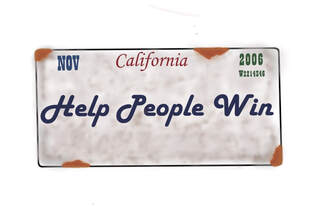 While crafting our vision for 2024 we have been called back to the mental discipline of a United States Medal of Honor recipient. Carrier Air Group Commander Jim Stockdale’s plane was crash landing over North Vietnam in 1965. He was 40 years old and knew his age and rank would be held against him and in the 30 seconds that he parachuted down from his aircraft and into the middle of an angry North Vietnamese village he estimated he would spend the next 5 years of his life as a prisoner. The torture Stockdale and his fellow captives endured was inhuman and led to the creation of the Stockdale paradox he penned upon being freed after 8 years. Whilst sequestered in our home in April of 2020 we published an article about what we could all learn from the Stockdale paradox and the principles of endurance and persistence. Looking at the 4-year anniversary of that experience in the face we think it rings as true today as it did then. We wondered then and still wonder today if the pandemic is really a 5 to 7-year calamity. All the major institutions like the federal reserves and the federal governments made decisions that while having certain short run impacts created medium term consequences. It has been a turbulent time for business owners and their employees. As we turn towards year 4 post covid the Stockdale paradox would advise us to not think about a terminus date like 2025 or 2027 but rather to be convinced of our ability to survive and make living at this time the defining moment in our careers and all the while stick to our daily basics. What are the basics? We wrote a book about the basics called “The Next Gen Almanac” in 2016 and will be highlighting the essentials in our 2024 editions of Branches & Roots. We created a quick diagnostic for the key areas of your life so you can easily handle what life throws at you and keep adapting and moving forward. Here are the categories.
Look for some fun announcements in this area in 2024 as the new AI tools continue to allow all of us to productize our offerings in new and hopefully impactful ways. Thank you for your readership and friendship in this our 10th year as a company, let’s put the pedal to the floor together in 2024! Drew & Sara
0 Comments
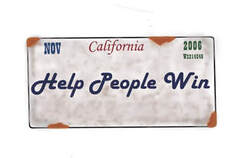 The fall of 2021 has been moving quickly relative to how slowly some of the past 18 months have seemed to crawl. Several CEO's shared with us that 2021 has had some unique outcomes on what we are calling “the normal amount of corporate change." In short, because the organizations that you are running have been forced to make changes tied to the pandemic, the normal amount of opt-in changes has dropped off considerably. As one of them said to us: "if the roof is on fire, you don’t spend much time worrying about who is cleaning the pool." We find this observation valuable to share because it is at this time of year that leaders are gathering to set the goals for 2022 and quite often the past is used as prologue. This could be a recipe for disaster and we are suggesting a few ideas on how to not fall into that trap. Step 1 – Look at the previous rate of change prior to the pandemic. Two years ago, as you were outlining your growth strategies and allocating budgets for the coming year there was a normal rate of change in your forecast that we will call X. There could be several different categories that could help your team get to X which included customer growth, margin enhancement through cost cutting, and new customer acquisitions. Step 2 – Look at how the Pandemic has augmented the rate of change in each category. We have viewed the pandemic like a large landslide that has blown through a village, destroying some of the village, isolating the two halves that remain and noticing that one part of the village is benefiting and the other is suffering. We have been involved with companies in all three parts of that village and if you are still in business this is a good time to realize that 2022 just might be very similar to 2021 and to plan accordingly. Going back to some of our earliest writings when the pandemic broke, the key actions and habits of persistence highlighted by Admiral James Stockdale could serve you well when working with your teams. If the impact of the pandemic is going to be felt for the next 7 years, then managing the expectations of your employees and shareholders matters as we head into year three. When you do look at the categories that get you to your X we think you might notice that some of your customers might be out of business, some of your pricing power may have increased, and importantly the total addressable market of customers looking to make a voluntary change in the next calendar year may have dropped off a cliff. This last point is really important, you will burn through your sales team if you ask them to win more games than are being played in a given year, and unlike professional sports the number of games played in a season changes in business. If the top 10 buyers of your service aren't going out to bid next year, you need to adjust your forecast. Step 3 – Customize your 2022 plan to keep both your upstream and downstream publics aligned. Inside of a vacuum shareholders want an infinite return for limited investment, customers want maximum value for the minimal cost, and employees seek stability and compensation for limited effort. In the marketplace all these self-interests smash together. The planning meetings you are in right now are unique and if you are being pressured by shareholders for breakout growth make sure your data supports it in these conditions. Step 4 – Use the context of the pandemic to enable nailing team chemistry. The pandemic is a huge catalyst which can be used as a galvanizing force to bring people together. The best leaders are working on team chemistry now which will be the foundation for their success beyond 2022. We are just digging into how the best leaders foster environments of great chemistry and will be sharing our findings in future publications. A former player of Bill Walsh’s recently shared a quote from the famous coach. “You can have a winning team without chemistry, but championship teams always have it, and it's never the same twice.” 2020 & 2021 forced us all to change, and looking ahead it seems we might all be alchemists at the bench mixing the right atoms to create the winning chemical bonds for 2022. Thank you for your friendship and readership, Drew & Sara p.s. Not sure if this person is a chemist....but haven't we have all felt this way at some point in recent months... 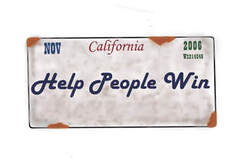 The Tokyo Olympic Games were a treat to watch, the athletes commitment and energy was contagious as were the emotions pre and post competition. We came out of the games with a question. Why is it that the most talented team doesn't always win, and if you are in charge of a heavily favored or talented team how can you make sure you deliver on the premise of all that talent? It appears that talented teams face their own special challenges and it's often because they don’t want to focus on the fundamentals, just outcomes. Other issues get in the way as well like style and ego. The point of many games is to get the other team to yield or quit. This starts in their mind, moves to their face, and ends up quickly in their shoulders and feet. This makes many of these contests about not just talent but about effort and grit and persistence. Adding to the challenge the talented team will face lower competition that will not be able to compete at the same level. The accompanying win creates a false sense of security that can lead to large let downs later in the season when other talented teams who have better practice habits show up. Suddenly and predictably your team's talent is not enough. Some coaches use their force of personality and power to counteract the talent malaise. They seek to take charge. We have noticed some more subtle choices and outline the three conversations with three types of players that you may consider in your future leadership roles. Your Effort Leaders Who shows up early and stays late on your team? In his deep dive into the New Zealand All Blacks Rugby team author James Kerr identified that the leaders swept the sheds after every practice and game. These players are often not your high scorers, but they set a tone of action and pride that becomes contagious inside the locker room. This culture keeper can be a coach's best friend in out flanking the dreaded "lazy middle" that can exist early in the season when conditioning and pushing the boundaries of fitness matter so much. These effort leaders are some of your most courageous people, because they want to stand for something that may go unseen by the fans or outsiders. Make sure you take these players aside and praise them for their honor and effort, they often don't need a lot of public praise, but they will really want to know that you see it. Your Communication Leader It is so hard to not just talk about Draymond Green when writing about this type of player. However it is not just the loud communicators that you need to cultivate when working to hone in on your talented team's best efforts. Finding a player who has the courage and the capacity to effectively communicate and not over communicate is difficult, but as a coach you can nurture and grow people into this role if the right player isn't on your team. We have watched Steve Kerr work magic with Steph Curry and Klay Thompson and would lay odds that in certain rooms, they are communicating important messages to the team and Draymond is listening. Early in the season grab the players you are going to need to carry some of the communication duties and outline how and when you are looking for their help. Your Performance Leader Everyone knows who can ball, play, deal and close. This is part of the problem. The player knows it, can get drunk on it, and then not have the focus to perform at their highest level late in the season when other great performers are on the opposite team. Jimmy Chitwood hits the game winner at the end of the 1986 movie "Hoosiers", yet early in the season the coach let's him know that the ball is the only special thing on the team. How you surround your performance leaders from the very beginning of the season can define how far the team will go at the end of the year. You will be communicating with this player or players constantly as they will be running the plays you design, yet having a cadence of communication about their role beyond just impacting the game is also crucial. What if I have a Michael Jordan on my hands? Weaving these conversations together with the different players should allow you to create some bonds that can become quite strong. The ESPN documentary "The Last Dance" showed that in some cases, a lone figure will come along like Michael Jordan who may seek to take on all three roles, and yet players like Steve Kerr and Bill Cartwright were proven to be instrumental in building the culture that coach Phil Jackson sought to create and maintain. Aren't These Just Captains? These conversations, the antidotes might seem like obvious communication with what most people would call a captain. However we didn't want to give them the label of authority on our own, your labels and roles are what matter in your cultures. Sam Walker wrote a great book by the name of The Captain Class where he outlines that the key to the best teams is to have great captains. On the other hand, Jack Clark gives an excellent talk about building culture for the Cal Rugby Team and goes to great lengths to identify that authority and leadership in a group can be different. Clark articulates that authority is tied to process and protocol, but leadership is tied to values that are honored by all on the team. Every member of that tribe should be called to lead themselves to embody those values regardless of performance in the competition. Whether you are running a fall team or are setting up a team for next year we are curious how your conversations will go with your team as you create another unique tapestry that is this season. Please share with us your insights and perspectives and thank you for your readership and friendship.  This is a series of articles from emails that we were sending out to clients and friends as the CV Crisis evolves. Hope it is helpful for others and also provides a historical context as we all reacted and learned about the seriousness of this virus. I grew up in California and was on a swim team from the time I was 7. Trips to the coast were a delight and with them came lessons about the strength and power of the ocean. One element you felt almost instantly once you were past ankle depth was the undertow which was managed without much difficulty. However, the more dangerous element that still leads to ocean drownings every week is the rip current which is frequently call a riptide. The key thing we learned was that you could use a burst of energy with an undertow to get yourself to be able to stand and recover, but you could never beat a rip head on. Why the ocean swimming lesson 10 weeks into a pandemic and a correlating economic shut down? We have noticed many people, including ourselves, trying to sprint to safety and our misdiagnosis of the situation could be costing us valuable energy in what appears is going to be a much longer swim back to shore. The rip takes you out past the breaking waves, into the deep water. Once you know you are in a rip you orient yourself to the shore, swim sideways (they are typically no more that 100 yards wide) and then can start to re-orient yourself to swim diagonally or directly back to the wave line. You still have a ton of swimming to do, you will be very tired when you get back, but you actually can make progress and survive. The one two punch of the pandemic and recession is a substantial rip. Each week we get more bad news from a wide range of industries. It can be confusing but it shows just how intertwined our supply chains are and how finely tuned they had become. It seems odd that pigs would be slaughtered, why not just let them get bigger? Why is a lettuce crop getting tilled up? But both of these are viewed as a crop and if you are going to lose money, then you stop losing money as quickly as you can. Here are our findings after another active week working. You Can't Punch the Pandemic in the Mouth Don’t look for the heroic kick save that always works in the movies. Save your energy and reorient your position to live to fight another day and take the measures that will allow you to survive. Plan from the bottom up. A good first measure is to build out plans on how your family and your business survive a Pandemic Period. This war is like any conflict, it never shows up where or when you thought it would. Enemies attack where you are weak and adapting to that blow is the first step. Our training needs to be in adapting and then preparing for the next unforeseen action. Part of that preparation is doing what we call C-B-A planning. C-B-A planning was something that came out of the financial crisis of 2009, it is where you understand how things will look in reverse order. You plan to survive first, then improve and then optimize. It is not normal for most of us as we plan for everything working and often times we succeed. However, in a pandemic period work the numbers and the choices out in your mind so that if and when we get another broadside attack adapting will be about implementing not deciding. Help others with the eye of a Lifeguard Start looking for how you can help others within your interests and strengths but make sure you have the energy allocated to do it. Another swimming lesson from my youth was from life guard training. Reach – Throw – Row – Go was the mantra for helping a struggling swimmer. Part of the reason for this was that the last thing you wanted to be was a life preserver for a drowning person. Endurance, Endurance, Endurance Continue to practice the habits we wrote about from Colonel John Boyd’s OODA Loop and Admiral James Stockdale’s Paradox as you hone your endurance skills. We all came into this Pandemic Period at different points in our lives and with big plans for the next 90 days, 9 months and even 9 years. It has brought some closer together which doesn’t make the news, it has driven others further apart which always makes the news, and it will leave its mark on all of us. #onwardtogether  This is a series of articles from emails that we were sending out to clients and friends as the CV Crisis evolves. Hope it is helpful for others and also provides a historical context as we all reacted and learned about the seriousness of this virus. The last 7 weeks have been intense, with health and economic fears hitting our midsections like Muhammed Ali punches. The loss of life has been an cruel lottery, everywhere in some places and seemingly nowhere in others. Job loss has been far easier to spot, its on every street corner and apart of every Zoom catch up call with friends. Job loss doesn't kill you, but it can push some closer to poverty's edge and for others push out a retirement timeline, when those sands of time feel like they are slipping away. Both scenarios cause grief and grief works on humans like rust on metal, it never sleeps. Three weeks ago we wrote about our new social and economic normal being in place until we get a Vaccine + 6 months and in those three weeks we have seen businesses adapt by severely cutting their spending to extend their cash runway. They are doing this because V+6 is so hard to peg and 24 months while easy to picture is hard to plan for. The image we came up with for this is when a sail boat is pointed directly into the wind, it can not tack and this is called being "Stuck in Irons" as the sails flap about making a ton of noise, while to boat goes nowhere. Is there a lot of noise around your family and business, but you aren't sure if you are going anywhere? However a couple of things appear to be coming out of this period as well. The brutal truth is getting shared more, customers and vendors and channel partners have lost the ability to bluff and while the truth can hurt, it also can be a great teacher. As a leader of a family and a company you might ask, what did I learn, and what does it mean and the end of each day or week? Your best customers identified themselves in the last 7 weeks and so did your worst. Your best vendors identified themselves in the last 7 weeks and so did your worst. Your best friends identified themselves in the last 7 weeks and so did your worst. On the customer front, make a map of those best customers, there are others like them and you need to say hello right away and start the process of acquiring them immediately, the good news here is that you have more clarity on why you will be a good fit which should help in the awkward early stages. On the vendor front, you probably learned how strong their balance sheet was, the more they freaked out, the worse off they probably were. Seek higher ground with better players in this space because you really have to expect more bad news in the future. With your good friends, even if it is just one, pour into them with your compassion and empathy and allow them to do the same to you. We all need allies now. Here are some thoughts on How to go from Stuck in Irons to Peering around the Pandemic Bend? Airforce Colonel John Boyd was a world class fighter pilot and changed how our war planes were built in this country, his biography is worth the listen or read depending on your preference. Colonel Boyd also left behind a decision making frame work that is the standard for our military and might be of use to all when it comes to adapting. The OODA loop stands for Oberve, Orient, Decide, Act and is born out of air to air combat training that earned Colonel Boyd the nickname (40 Second Boyd) because he would allow his combatant an advantage position on him and within 40 seconds would be in a position to kill them. Most of us can now relate to feeling like we are in a disadvantaged position and maybe it is time to take a page from Colonel Boyd's book and run the OODA loop to help us Peer around the Pandemic Bend both from a family but also a work stand point. Observe what is causing your discomfort of pain, measure the size and scope and do not hedge the size or seriousness of its power. Orient yourself and your assets to the enemy. How can you adapt given what you have currently within reach? Decide on action to take. Act on that decision. Reflect and run the loop again. Much of the OODA loop training in the military is how to run the loop faster than your enemy, to get inside their OODA loop. Today's climate is perfect for taking that same point of view. Consider running a daily OODA loop for yourself, and family. Run a daily OODA loop for your work team. These simple questions will allow you to get to a brutal truth as quickly as possible which will allow you to adapt. May appears to be a month where the country will tear itself apart at the seems as the battle for economic safety pits itself against our collective health. Our regional differences will be on display and their will be a few Gollum moments as the pursuit of "our precious" rings will get ugly. Our aim in May is to work with those self identified best customers, vendors, and friends and improve our OODA loop skills as we push forward through the fog of this pandemic war. Call or email us if you need help. #onwardtogether, Drew 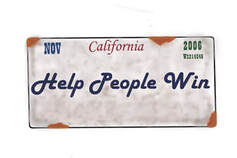 Why is such a strong word. Why gets used early in life because the 2 year old in all of us knows it has the most power. Why also is really dangerous if used incorrectly, especially when you don't have the power or influence to use it in a business setting. As a sales person you know that if the buyer makes the wrong decision and the switching costs are high enough, it could cost them their job. That is where the line, "no one ever got fired for hiring IBM" comes from. But as a sales person you also know that asking, "why aren't you picking us right now" is a lame question and its not going to get answered truthfully. You need to up your game as we discussed last time and substitute what and how questions to get the answers you need as to when they are making a decision and why your team is going to win. Which gets us back to the final word in our series "WHY" Because on an internal team you can build the trust to use this word correctly which is to help you nail the body language, tone and words of your positioning statements and questions. When you are preparing for an enterprise sales meeting there are going to be multiple people who all need to know their role. Someone on your team will be the presenter if you are sharing new information, it can help if someone else is the conductor who sets up the call, let's the presenter speak and then is able to frame the information in the right context and ask the right question in the right way at the right moment. AND THEN EVERYONE ON THE SALES TEAM DOES NOTHING AND SAYS NOTHING It is now the leader on the buy side who will speak or if you don't really have the decision maker present the person who reports to the leader will answer. The why part of our enterprise sales call mantra is so that you can win more often and save time by not working on deals when you are not going to win. Get your roles down, practice your phrases and learn how to be quiet and watch as you spend more time on the right deals and less time on deals that have you flat on your back like Charlie Brown after Lucy pulled the football out at the last second. Hope this helps and if you like it, please share it! 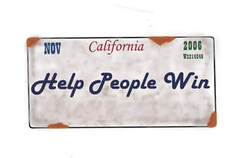 The first 45 days of 2021 have started to show us that the vaccination roll out and reopening of our full economy will last the entire year. The word Hybrid is being used a lot and that fits our narrative going back to last July when we started focusing leaders on January 1, 2022 as a good heading to work towards with their teams. Our current focus is how to connect with the members of the team who are not doing well, the bottom half of the K recovery. This leadership challenge is well documented by Simon Sinek's "Leaders Eat Last" book, or the notion that the captain is the last one off the ship. We came across a great insight for connecting with those you lead by former Secretary of State George Schultz in his recent 13 page white paper "Life and Learning after 100 Years". Schultz noticed how Ronald Reagan would approve the content of a speech and then in his final preparation would mark spots in the speech to insert a story. Here are Schultz's words: I remember the day when, as secretary of state, I brought a draft foreign policy speech to the Oval Office for President Reagan to review. Reagan read through the speech and said, “That’s fine.” Then he picked it up again and began marking it up in places. At one spot, he wrote “story” in the margin. I asked what he meant, and he said, “That’s the most important point. Your speech is good, but to engage your listeners, it always helps to tell a relevant story they can relate to. That way, you’ll appeal not only to their minds but to their emotions.” Reagan understood that you could make a point or you could tell a story. Always tell a story to make your point whenever you can. It penetrates in a way no abstract point can—and it therefore forges an emotional bond, and emotional bonds build trust. We view this as both timeless and timely advice for any leader and hope that as you are communicating to your teams and audiences that you work to add stories of hope and caring around the facts and objectives. The stories "activate" the message and that activation is the force multiplier inside your human system for spreading the right message to the very fringes of an organization. It is in the connecting through significant shared experiences that trust is built and with trust in the air, magic can happen across cultures. The subtitle of the Schultz document is "Trust is the Coin of the Realm" and we need our leaders to be building trust with their constituents in this hybrid year. . If you know of any leaders who could be empowered by this idea from Schultz and Reagan, please forward this to them, the people they lead need hope. Thank you for your friendship and readership, Drew & Sara p.s. Wanted to thank the many of you who responded to our last email about "Lessons Learned from Dad" it has made for a multitude of great conversations and warm warm feelings. 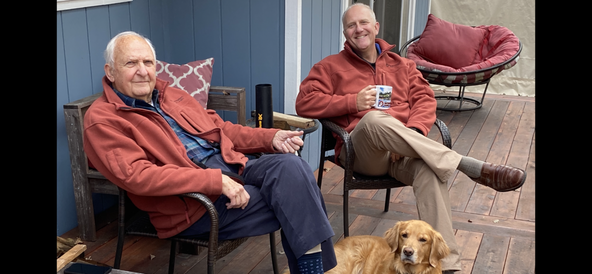 My father John Roy Sanders was diagnosed with Pancreatic Cancer in June of 2020 and succumbed to the disease 7 months later. Along with so many changes that came with 2020 our family has been navigating the pending and alarmingly immediate loss of a happy and kind patriarch. In keeping with our V2 theme I would like to share a few lessons learned from my father as we leap into 2021 with the hope of Covid free world but the experience to know that more storms lurk. John Sanders (Oil man by day, builder and family man by night)
A Sanders - "Can Do Anything"
School is a means to an end
Show up to work days and enjoy the work
Looking forward we imagine that you are champing at the bit to get going in 2021, these first 105 days appear primed for great activity especially since the lock downs happened in Q1 last year. Our aim is to work our plans hard but to also have another Plan B and Plan C in the drawer for when the next curve ball comes our way and when it does we will be emulating John Roy Sanders often. Click for the NEXT post in the series, or the PREVIOUS post. 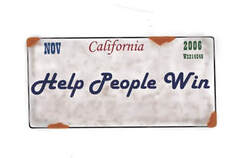 This is the 4th email and 3rd checkpoint in our 1/1/2022 Victim or Victor Series. Staring at the final 45 days of 2020 and with a national election behind us we imagine you might have a few of your team members remarking how much they are looking forward to being done with 2020. Sadly, as a leader you know all too well that Monday January 4th will present just as many challenges and opportunities as the previous Monday. Setting your team’s sights further out appears to be prudent and we have compiled a few best practices for your ready reference. Be wary of vaccine watching. We hear lots of chatter about COVID vaccines and will rejoice when the right solution is presented at scale, but we don’t think you want your people to be the worldwide experts in that narrative as it can be tremendously distracting and demoralizing. Admiral Stockdale whose 7 years as a POW in North Vietnam make him a good primary source on endurance commented that the people who suffered the most were those who set arbitrary dates on when they would be released. When the interviewer asked who didn't make it out of Vietnam, Stockdale replied: “Oh, that's easy, the optimists. Oh, they were the ones who said, 'We're going to be out by Christmas.' And Christmas would come, and Christmas would go. Then they'd say, 'We're going to be out by Easter.' And Easter would come, and Easter would go. And then Thanksgiving, and then it would be Christmas again. And they died of a broken heart.” Stockdale then added: “This is a very important lesson. You must never confuse faith that you will prevail in the end—which you can never afford to lose—with the discipline to confront the most brutal facts of your current reality, whatever they might be.” Keep the daily routines and the key actions in place Amidst the consistent noise of rising COVID cases and the concern over pending government actions it may be wise to take a page from Earnest Shackleton’s book when he was stuck on the south pole in the middle of winter. Their multi-year struggle with the elements included strict daily routines and even time out for the men to kick a soccer ball around. When you are asking your team to hang in there every week, it can get old, consider keeping the cadence of meetings at the appropriate level and focus on the key actions that matter. Thinking back to the soccer example, we find it amazing that after trying to use a hand saw to break ice away from a ship that they had the energy to do anything, but the men trusted Shackleton and he trusted the power of keeping a cadence of action. Having the courage to celebrate. This may seem crazy, but we think the curious leader will find a way to help the team have the courage to celebrate the year. Turning this scrooge of a virus on its head and leveraging that for the first time in a century we are all have a common foe reminds of the Who’s in Whoville singing around the beleaguered Christmas tree in “How the Grinch Stole Christmas” by Dr. Seuss. Having the courage and curiosity to celebrate with your team could play a vital role in how the first quarter of 2021 goes for your team.
How you answer these questions could make the difference in having a team that resents everything it sees in the world or one that is buoyed by what they are overcoming and empowered by the resilient spirit that this period of their lives is helping them build. The Who’s gathered hand in hand and sang, and while we know we won’t be holding hands and probably not be singing, we sure hope you find a way to celebrate. We celebrate the opportunity to share our insights with you and are thankful for your readership and friendship. Drew and Sara View the next post in the Series View the previous post in the Series 45 days ago we shared our vision that navigating your personal, family, and work lives in this pandemic period could benefit from having a NorthStar heading of 1/1/2022.
Where do you want to be on that day and what do you want your world to look like? This is our first checkpoint follow up with a few things we have noticed, and some questions we have been asked. These are bulleted below for your ready reference. ------------------------------------------------------------------------------------------- What we have noticed.
That is what we noticed, what about you? Want more of our Victim or Victor Series? Click HERE for the next post. 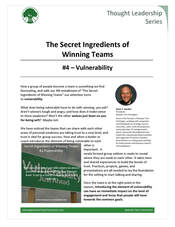 There are many noble pursuits for a coach at the beginning of the season and we hardly ever bump into one who is volunteering their time in the hopes of causing a kid to quit the sport. However, if we were to vote on one of the hardest goals to obtain, we would put achieving collective excellence above going undefeated and winning the all-city title. Our definition of collective excellence has its roots in the work of John Wooden and those who also seek to build a personal relationship with each player in the joint pursuit of the team’s goals. The ability of the coach to build trust with the player, to such an extent that the player can agree to the role the coach has constructed for that season is crucial. It's part sales pitch and part plea for support and trust. Each season is as an opportunity for the coach to have a scouting report done on themselves, a book as it were. It answers the question, how do we beat this coach? Scouting reports are common on players: what is the book on that guy?
A coach should also want to know what “the book” is on them at this point in their career, and then work the next season to improve. So what is the book on you right now? The coach who trusts his or her team enough to be vulnerable with them should be well on their way to existing in a state of consensual interdependence with the rest of the coaching staff and the players. We wrote about this in one of our Thought Leadership Series pieces shown here. The pursuit of collective excellence begins with the coaching staff and then continues through to the players. If you can think of a team you were on that achieved this, please share with us as we continue to build out stories on this topic. You may be interested in our post on Turning a Group Into A Team.  We first heard this term small societies from UNC women's soccer coach Anson Dorrance in a talk he gave at the What Drives Winning Conference in 2015. It was a scant reference at the beginning of the talk (minute 1:15), but for geeks like us, it was cause for research. Dorrance is a coach in pursuit of collective excellence. He is building a cumulative chest of wisdom on the topic of human collaboration in the pursuit of putting a ball in a net and caring about each other in the process. His research led him to discover Cesar Luis Menotti of Argentina who had the high pressure job of being that country's national soccer team coach. It was Menotti who started talking about the teams within the teams, calling them small societies when describing the relationships between the goalie and the fullbacks, the right midfielder with the center forward. It is similar to Metcalf’s law of networks and how intertwined our relationships can get. Our current learning is this: Consider looking at your team the same way you would look at this square. You know you are going to be asked, how many squares can you see? If a square is a small society that could exist on your team, how many can you see? Make a list of small societies for your team and then if you feel like it, share it with us. As the coach, you can’t advise and mentor what you can’t observe.  Somewhere between Salt Lake City and Grand Junction this January while climbing a scary mountain pass in a four wheel drive it came to us that a way to look at the CEO’s job is as follows: To determine how much stress the balance sheet of the company and the people that work for it can handle at this time in the company's life. You may have a different view of it, or a different way to say it that works for you and we would love to hear from you about how you see it, but humor us for a minute. It appears at times that even at some pretty large companies that the only person who is really thinking about the future of the entire enterprise is the CEO. Everyone else is in their department looking for more resources, and hopefully in the words of Peter Drucker, focused on the next most important task. What does this mean for you? It means you need to be relentless in your pursuit of what is true from your direct reports because they may have an inherent bias to keep you on a consistent drip of flattery and fluff. It also means that having a board of directors that can help you think about the company from the outside is vital. Questions a good board can help you wrestle with are: • How much debt should we be working with now to grow the business? • Where are your next threats coming from? • What innovations are going to allow you to increase your margins? • Where is your current leadership team in their own personal life cycles? The rub is that building and maintaining a productive board of directors is a challenge. Too often it is such a hassle that you don’t even have one. CEO’s can often feel like the coach of a professional sports team. The players on the field are your employees, the fans in the stands are the customers, and up in the owner’s box sits the board of directors. Where does the coach stand? Sometimes they stand alone. Key Insight Ask yourself the following question: What is the company telling itself right now that we want to be true, that may not actually be true? Many department heads will be talking about growth because they know that is what everyone wants to hear. The challenge is that if the company doesn’t manage its balance sheet and time the growth correctly outside forces can end up owning the business. You may have a growth mandate, but try as we might most of us can’t make water go uphill, so back up your mandate with facts and processes you can trust and measure. This rigor and dialogue can save your business.  Consultants can bring diversity of thought to a company, they also bring new terminology that at first glance may not make sense. We use a customer acquisition framework (CAF) to describe how a business wants a potential customer to learn about, and then accept its offer. It might be called sales and marketing and in other places it’s called marketing and sales. Regardless, the biggest change we have noticed in this area are the options available to your company relative to just five years ago. That is why it is one of our themes for 2019. It might make sense for you to revisit your strategy. In 1995 the phone and the fax machine were the money makers, and having a toll free number was a big deal. You might have had a marketing department, but you didn’t know what worked and what didn’t and the magazine ad salespeople were really happy about that. Today marketing executives can show up to a meeting with real data that tracks and predicts future behavior by your target customers. What does this mean for you? It means you have more leverage with your marketing dollars and your sales team. Just ten years ago you were still guessing with your marketing dollars and the sales reps could hold you hostage with the relationships they initiated. Key insight In the House Tour image below think through how far you could have a potential customer get without the help of a sales person? As an owner you have an incentive to get them as far through the house as you can. Get this right and your cost of sales will plummet and your profitability will rise.  Email continues to be the killer app for developing and maintaining a respected position with your clients, customers and prospects. Recent data shows that enterprise and individual customers spend the vast majority of their time reading and communicating inside of an email application. What does this mean for you? It means that unless you have a business which really wants to attract a customer that it doesn’t know and offer them a commodity (think owning a McDonalds franchise) you don’t really need to spend a ton of money on social media. Your best course of action is to have a well-developed email communication plan that integrates with your website and sales team. Key Insight The frequency of your email communication should depend on the type of service or product you are delivering. It can range from a travel service emailing you multiple times a week, to an estate planning law firm that shares its findings once a quarter. If you want our advice on what your cadence should be, click here. 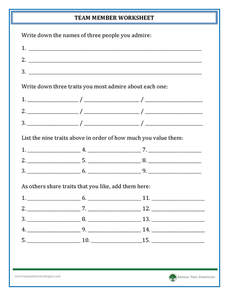 We have often been asked to help with this question: How does a company build a winning culture? In pursuing the answer to this question, we have noticed the stark cultural differences between a group and a team. If culture eats strategy for breakfast than a team eats a group’s lunch. What is a group, and what is a team? For definition purposes here are some of the fully researched differences between a group and a team:
Companies hire people from different walks of life, with different strengths and different personalities. These differences can be obvious and group dynamics can take over if the leadership doesn’t take an active role in helping people understand how they are aligned and the things they have in common. A great way to do this is the admiration exercise which takes about 60 minutes for a group of 15.
Hopefully you kissed some of the joy of summer as it flew by, put the memories in a jar, and blessed them with gratitude. Being able to do this, regardless of how full your jar is can be vital as you shift your focus to the fall. Here are a few helpful nuggets in three areas of work:
IF YOU HAVE A BOSS: Put yourself in their shoes and think through how they are looking at the next 18 months of their life. Understanding begins with observation, and if you are looking for a primer to help you in this area consider using our mapping your boss template. IF YOU ACQUIRE CUSTOMERS: If you acquire customers for your company and have an annual sales number this time of year can be fantastic or frightful. Careful pipeline and funnel management will help you decide where to allocate your most precious asset: your time. Here are a few questions for you to review: Don't worry, we have not picked up a new bad habit, a recent trip to the library had me opening up a new book, and the combination of the adhesives and paper gave off a smell that made me smile. If you can imagine that smell right now, then you might really enjoy this edition.
When it comes to reading, word of mouth seems important. We just don’t want to make a book purchase and end up with a dud. With that in mind we suggested for the past summer 12 book ideas for the 12 weeks of summer. We hope you find one of our selections interesting and that you find the time to read (or like many of us listen to the book). We have divided up the recommendations into five categories:
Most of these books are not new but they all were worth the investment of time, money and enrichment a good book can bring. CLICK HERE TO SEE OUR SELECTIONS  Pitching in to support your children in their endeavors has a name. It’s called parenting. It’s a noble role and duty that changes with the decades. Currently from the ages of 4 to 14 there are many different roles a parent can fulfill in the area of youth sports. The roles have different levels of authority and requirements. Head Coach, assistant coach, team manager, culture keeper, league treasurer, league president, end of season of pizza party planner, are all roles parents fill. Both Sara and I have enjoyed participating and working with the kids and others parents these past ten years. What caught our eye this year is that after moving towns, we went from a head coach, league president, large authority role to that of an assistant coach. The opportunity to not have to coordinate and orate to 15 players on a team and to 200 players in the league and 30 to 400 parents left a void that allowed an observation framework to appear. This year we had room to see players individually be afraid of failure and to encourage them. Our interest in building framework for others to use also led us to come up.... Working with companies, non-profits, and sports teams affords us a wonderful window into the world of effort and outcome. Goals are set, causes are cared for, and games are played. A haunting question lurks in many of the minds, what do I do if I try my hardest and fail?
Seldom do we hear it verbalized, but we notice that much effort is made to sabotage the effort piece of the equation to allow the players a margin to recover their pride when the outcome is below the standard. It's much safer to reserve some effort and hope for success, if it gives you a nice mental pillow to rest your ego on..."well I didn't go all out so next time...." Our question for leaders is, what is this mindset and handicap doing to the productivity of your team? If you could minimize it and get your team to deal with success and failure with the same attitude, what would that look like? Under pressure we don't rise to the occasion, we fall to the level of our training. Achieving this outcome is no easy feat. One of the steps in getting there is done by providing a safe area to communicate what trying your hardest looks like, and having a recovery element to reward the effort. If people will risk their best in front of others, then when their limit is met, consider celebrating and providing them sanctuary to recoup and reflect. The power questions for leading a team to risk more, think more, and do more are: what did we learn, and what does it mean? As the leader facilitates the questions and honors the responses watch the trust on your team soar. We think other things will soon rise as well. On this topic read our post What's Your Q Rating with more info on Mindset |
This section will not be visible in live published website. Below are your current settings: Current Number Of Columns are = 1 Expand Posts Area = Gap/Space Between Posts = 10px Blog Post Style = card Use of custom card colors instead of default colors = 1 Blog Post Card Background Color = current color Blog Post Card Shadow Color = current color Blog Post Card Border Color = current color Publish the website and visit your blog page to see the results Categories
All
Drew Sanders BlogSome of our awesome posts are from our newsletter Branches & Roots, an 8x a year publication. For full annual volumes see our buttons below! Even better sign up for the newsletter so you don't miss out. Archives
November 2023
|
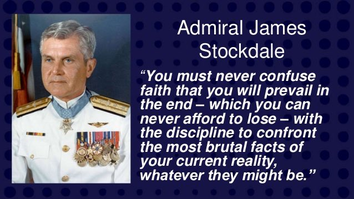


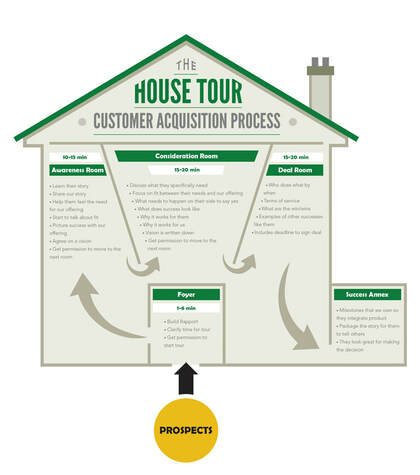
 RSS Feed
RSS Feed
